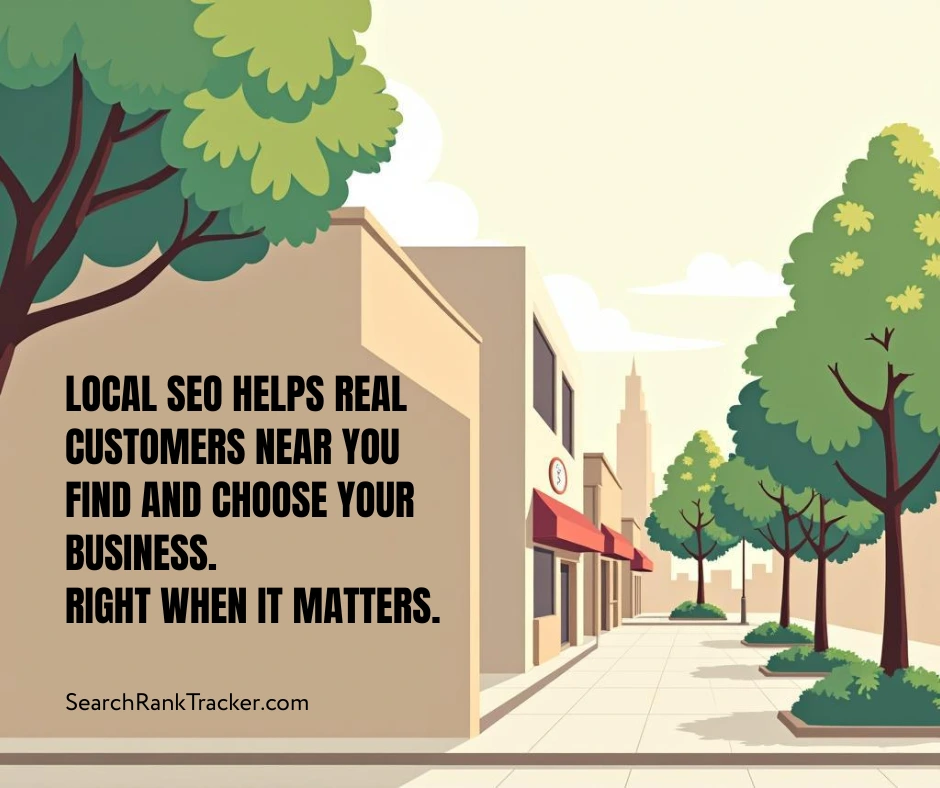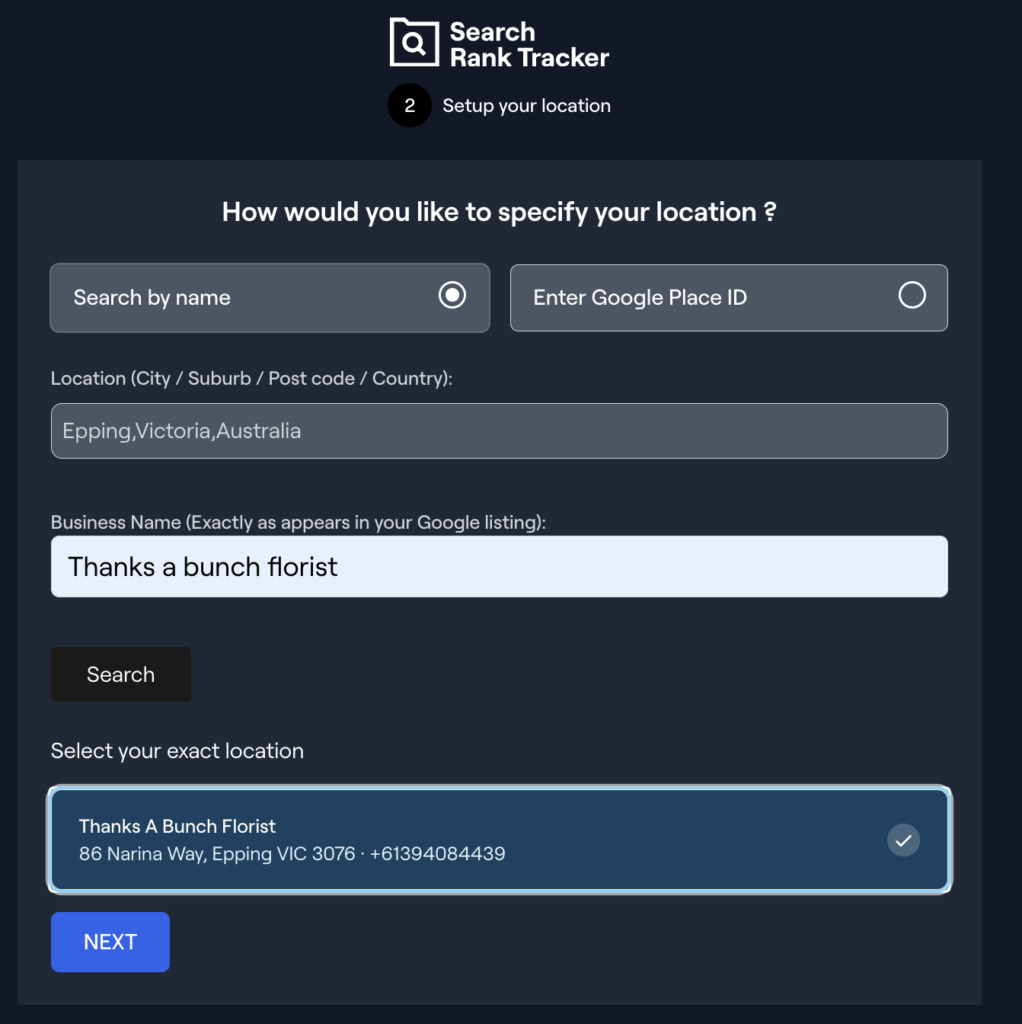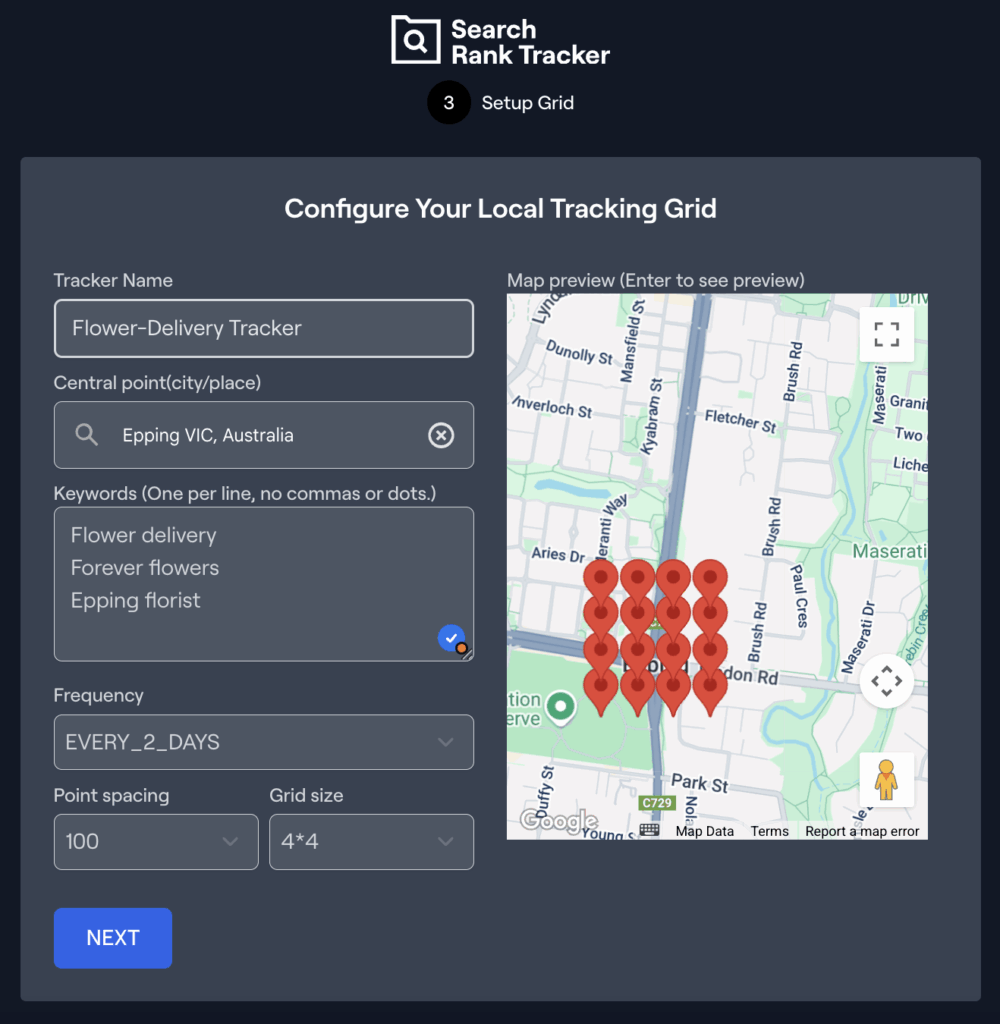When you are running a local business, having local users find your business on the internet, or on Google in this case, is a non-negotiable priority.
That’s what local SEO is all about. It determines which businesses show up for people in your local area when they search for specific products and services.
To properly understand how you’re showing up in your local area, you’ll need a specific SEO tool known as a local rank tracker.
This blog breaks down exactly how to set up your local rank tracker with Search Rank Tracker, using 5 quick steps that take less than 2 minutes.
What is Local SEO?
Local SEO, or local search engine optimisation, covers general SEO practices, but in this context, they are quite local-based.
To put it another way, general SEO tries to help everyone find the best-fitting option on the internet, but with local SEO, it tries to help “local” people find the best local option.
People in different neighbourhoods might see different results when they search due to local SEO.

Why Local Rank Tracking Matters?
In the world of business, competition is inevitable, and the same law applies to local SEO.
Local businesses compete in specific neighbourhoods or towns, so keeping track of how you rank locally helps you understand if you’re gaining customers or losing them to competitors.
If you don’t check your local rankings, you might miss out on keywords that bring in customers who are ready to buy something nearby.
Most local searches happen on phones, and these searches often mean someone wants to find something close by right now. That’s why tracking local rankings matters a lot.
Also, customer reviews and listings on local websites help your business appear trustworthy and rank higher in search results.
Set Up Your Local Search Grid In Simple 05 Steps
You can set up your local rank tracker in less than 2 minutes with us and start tracking your local SEO performance to see how your local business shows up in search results.
First things first, head to www.searchranktracker.com/local-rank-tracker to begin your setup.
Step 1: Type your business name, and be sure the name matches your Google Business Profile

Step 2: Choose a central location for your local search grid to focus on.
Step 3: Add the local keywords that are most relevant to your business to track them.
Step 4: Decide how frequently you’d like to update your ranking data: daily, weekly, or monthly.
Step 5: Adjust the grid size and spacing, whether you’re targeting a small neighbourhood or a wider area

Great job! Your local search grid is ready to help you track local rankings.
You can now monitor your business’s visibility in the local pack, improve your organic rankings, and make smarter decisions for your business based on the insights you get from your local rank tracker tool.
When you start, start by choosing the locations that matter most to your business. For example, the neighbourhoods where most of your customers live or visit.
Try to make it a habit to check your rank data regularly. This could be once a week or once a month, depending on how busy and competitive your market is.
Local SEO Isn’t Just About Getting Seen. It’s About Getting Chosen
Don’t just focus on your ranking number. Getting to the top is great, but it only matters if those visitors become customers.
Remember, rankings can change because of local events or what your competitors do, not just your own SEO efforts.
Keep in mind that rank trackers only show part of the picture. Always look at other signs, like how many visitors call you or make a purchase; after all, it’s about sales.
More importantly, make sure you understand the data in the right context. If you don’t, you might make decisions that don’t match your business goals, which can truly hurt your progress in the long-term.
Be careful when setting your tracker’s location filters. If they’re wrong, your data won’t be accurate, and you could make mistakes based on bad information.
Wrapping Up
You’ve taken the right first step by setting up your local rank tracker and seeing how your business performs across regions, but that visibility is only part of the journey.
Keep an eye on how your rankings affect visits and sales. This way, you know if the tracker is helping your business grow.
Update your tracked keywords and locations regularly or weekly, depending on your business. That keeps your data useful as your business changes and grows.
With the right local rank tracker, it can help you get noticed more and bring in more local customers, while monitoring how well your business is doing locally.
If any part of the local rank tracker setup feels confusing, don’t hesitate to reach out to us at [email protected]
Good luck with your local SEO!